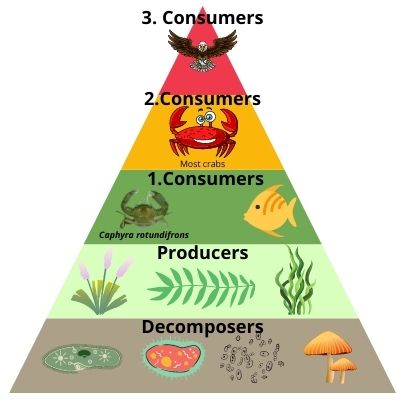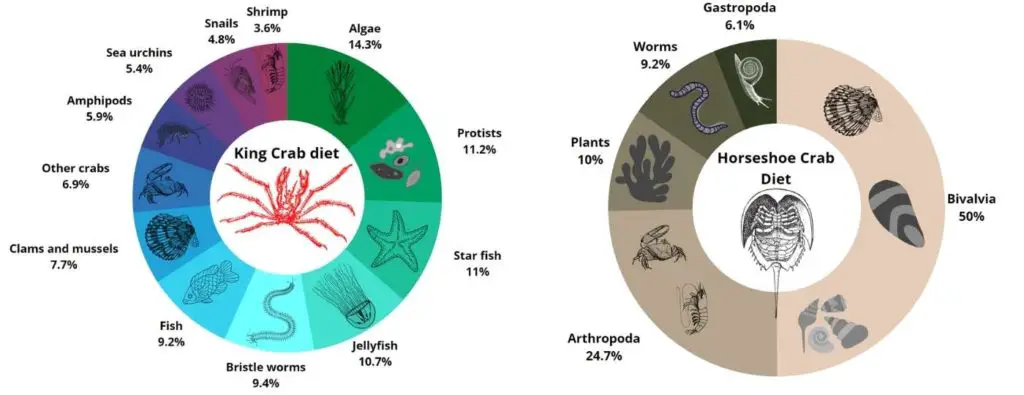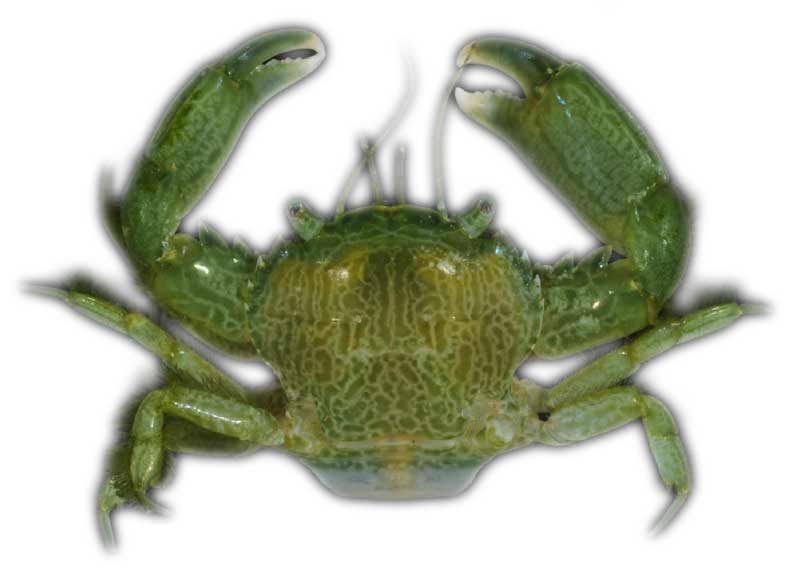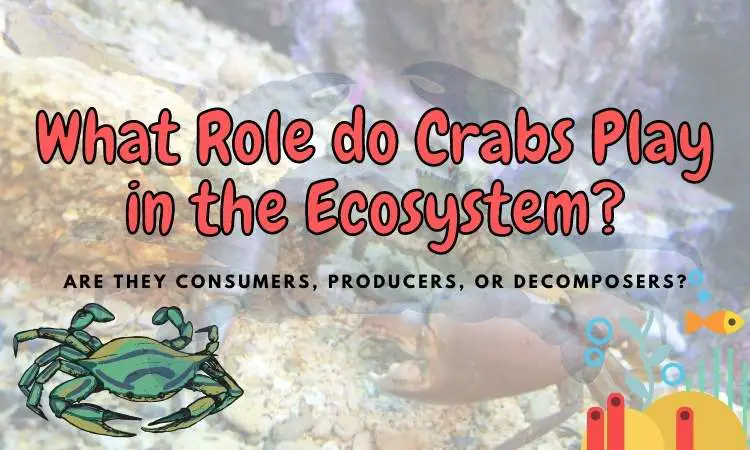Animals that live in the ocean constitute the marine food web. These animals use three methods of feeding during their food consumption: absorbing, grabbing, and also filtering. Crabs are part of this marine food web in which they are classified as part of the crustacean order Decapoda.
Scientifically, crabs are omnivores, meaning that they feed on almost anything they can get hold of. This effectively makes them everything but producers in the energy pyramid!
In this interrelated marine food web, crabs are located among various trophic levels: primary consumers (herbivores), secondary consumers (carnivores), tertiary consumers (omnivores), and decomposers or detritivores.
Now, where are crabs in the trophic levels of the complex marine ecosystem? Well, it helps to know that crabs are not picky eaters!
They will eat anything from dead or living animals to seaweed and plankton. Planktons are microscopic plants or animals (zoo- and phytoplankton) that thrive in the ocean with their role as producers and consumers in the marine food web.
Consequently, if crabs only consumed planktons it would make them primary consumers or herbivores.
Aside from being classified as primary and secondary consumers, crabs also take the position of tertiary consumers or omnivores.

However, most species of crabs are known to consume living fish, barnacles, shrimps, and even other crabs!
Let us take for example the hermit crabs. These are species of crabs classified as omnivores for they consume algae, mussels, and clams. They both feed off of other marine organisms and plants in the marine ecosystem.
The king crab is also a good example of a crustacean carnivore, as it feasts mostly on worms, clams, other crabs, mussels, snails, and even sea urchins.
Additionally, a horseshoe crab also snacks on other crustaceans but has a much less varied diet eating mostly bivalves.
An example of a crab classified as a detritivore is the blue crab. This species of crab is notable for its feeding behavior of consuming recently dead fish, clams, oysters, and mussels.
Blue crabs help return the nutrients back to the ocean floor in which the marine creatures that take the role of producers can use these nutrients in producing and making food in the marine food web.

Because of this, crabs are located in the higher trophic levels of omnivore feeders. But they do also eat dead animals like dead fish they find on the sea bed.
See my recent article for a full list of crab diets and feeding habits.
Are crabs primary or secondary consumers?
Crabs, like all crustaceans, can be classified as both primary and secondary consumers.
Some species of crabs, such as the porcelain crab are mostly vegetarian or herbivores feeding off planktons and algae found in the ocean water that it filters with its filter appendages.
On the other end, many species of crabs known to consume other crustaceans, snails, clams, barnacles, and sea urchins would be considered secondary consumers.
Examples of these species are the Dungeness and king crabs. One of the vital reasons for these variable dietary and feeding behaviors of crabs is that they are not picky eaters!
Essentially, most crabs will eat anything from planktons to other crustaceans, making them secondary consumers.
Are crabs predators?
Yes, there are species of crabs known to be categorized as predators. They will eat any live food they can get a hold of, but they are pretty slow for a predator.
An example of a crab that is notable for its predatory skills is the king crab. This species of crab hunts for prey on the ocean floor it can get its claws with.
Crabs may be slow to hunt for prey, but their predatory instinct strikes at any given time they have the chance to grab and held their prey captive.
They also eat a lot of slow-moving animals like mussels and worms.
Are any crabs pure herbivores?
While most crabs eat plant materials, very few are solely herbivores. However, the Turtle-weed crab (Caphyra rotundifrons) is a vegetarian (actually vegan) crab native to New Caledonia.

[Photograph by Gustav Paulay] CC BY 4.0 via Wikimedia Commons.
It spends most of its life caring for and harvesting its food from the moss-like algae Chlorodesmis fastigiata that is only eaten by the Caphyra crab and Elysia species and Cyerce nigricans sea slugs.
Are crabs considered scavengers?
Essentially, crabs are considered scavengers. They take part in the marine community feeders that take the role of breaking down organic material into smaller bits and pieces on the ocean floor.
Let us take for example the species of blue crabs and hermit crabs. These species of crabs are known to feed off recently dead fish, mussels, shrimps, and other dead marine organisms they can get their claws with.
It is part of the feeding and dietary behaviors of crabs to consume dead fish, mussels, clams, worms, and even other dead crustaceans.
As they are known to eat everything they can get their claws with, crabs take the role of scavengers in the complex marine food web.
Are crabs decomposers in the ocean?
Yes, but some would classify as scavengers rather than decomposers. They constitute the marine community of feeders that consume dead plants and dead animals. But crabs also eat rotting plant materials and filter the sand for organic particles, dead or alive!
Some crabs like the fiddler crabs and porcelain crabs filter the water for many non-living organic components, effectively making them decomposers.
This essentially classifies them as detritivores, just like many beetles, crayfish, and worms.
As such, when crabs consume these dead plants and animals, they reduce the organic material into smaller pieces which then make them scavengers rather than decomposers.




